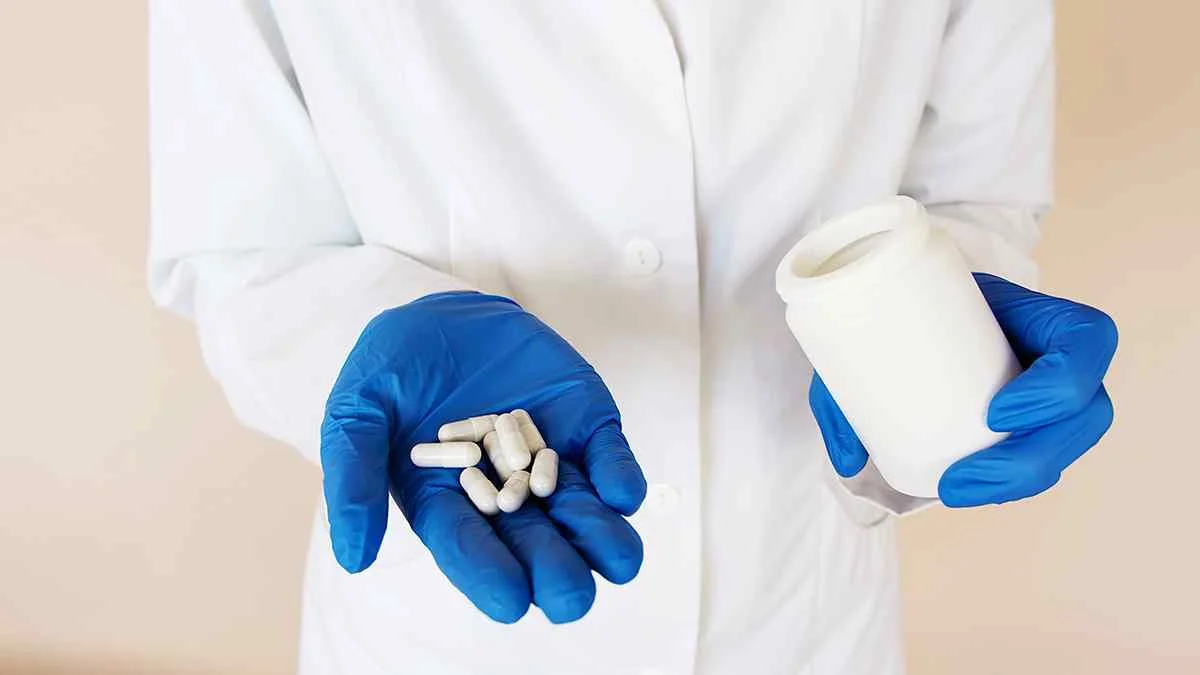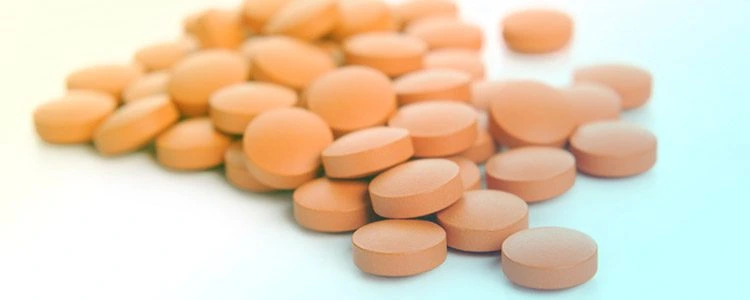Phenibut
Common Trade Names: Anvifen, Fenibut, Bifren, Noofen, Phenyl-GABA

Other Names: smart pill, Russian wonder drug, party powder, pbut, brain booster
Phenibut is a gamma-aminobutyric acid subtype B (GABA-B) agonist used in Russia for the treatment of anxiety, insomnia, depression, and other neurologic and psychiatric disorders. Because of its tranquilizing and relaxing properties, many people tend to misuse phenibut, especially since it is widely available online and does not require prescription. Learn more about phenibut here.
A Brief History of Phenibut
Phenibut was first developed in the 1960s in Russia by Vsevolod Perekalin, a Soviet Russian organic chemist. At the time of the discovery of phenibut, Perekalin and his associates were working at the Department of Organic Chemistry of the Herzen Pedagogic Institute in St. Petersburg. Since then, phenibut has been available in many parts of the world as an over-the-counter medication used for the treatment of various psychiatric conditions, such as depression, post-traumatic stress disorder (PTSD), and anxiety.
It should be noted that the drug is not FDA-approved and is not available as a medication in the United States, Australia, and in some countries within the European Union. Even in countries where phenibut is sold as a supplement, its over-the-counter availability is being called into question owing to growing reports of misuse and abuse of the substance.
How Does Phenibut Work in the Human Body?
As mentioned above, phenibut is a GABA-B agonist. It works by binding to GABA receptors located within the central nervous system (CNS). GABA is the primary inhibitory neurotransmitter in the brain. The activation of GABA receptors causes the chloride channels to open more frequently, resulting in cell membrane hyperpolarization. This leads to an increase in the threshold for neuronal excitation. In addition, phenibut has also been shown to antagonize the molecule known as beta-phenethylamine, or PEA. PEA is an organic compound that plays a role in the stimulation of the CNS. These mechanisms of action are thought to be responsible for phenibut’s tranquilizing, nootropic, anxiolytic, and anticonvulsant properties.
Phenibut is not a US FDA-approved medication. However, in most parts of the world, it is available online and over-the-counter as a supplement. In Eastern Europe such as in Russia, Latvia, and Estonia, phenibut is a prescription drug widely used in the management of insomnia, anxiety, and tension. Globally, phenibut is commonly used in the treatment of disorders characterized by depression and asthenia, and in various conditions like PTSD, vestibular or stuttering disorders, dizziness, motion sickness, alcoholism and alcohol withdrawal syndrome.
Phenibut is contraindicated in patients with known hypersensitivity or allergic reaction to it or any of its components. It is also contraindicated in patients with ulcerative lesions along the gastrointestinal tract, children below two years of age, patients with hepatic insufficiency, and lactating or pregnant mothers.
How Is Phenibut Taken or Administered?
Phenibut is available in 250mg or 500mg oral tablets and in 10mg/mL infusion formulation.
The recommended dose of oral phenibut depends on several factors, such as the user’s age, weight, medical condition, and other health factors. In general, the recommended starting dose of phenibut is 250 to 500mg. The maximum daily dose of phenibut is 1500mg. Any dose higher than the recommended maximum daily dose may easily lead to dependence and tolerance.
What Are the Immediate and Long-Term Effects of Phenibut Use?
Generally, phenibut is a safe and well-tolerated medication. Nevertheless, phenibut may produce mild adverse drug reactions even at therapeutic doses. Some of the adverse effects associated with phenibut use include:
- Nausea and vomiting
- Hypersensitivity reactions such as rashes and itching
- Headache
- Dizziness
- Drowsiness or sedation
- Irritability
- Agitation
At supratherapeutic doses, phenibut may produce:
- Loss of balance
- Body incoordination
- Eosinophilia
- Fatty liver disease
Patients suffering from phenibut overdose can present with:
- Nausea and vomiting
- Falls in blood pressure
- Drowsiness
- Lethargy
- Seizures
- Agitation
- Delirium
- Loss of consciousness
- Eosinophilia
- Fatty liver disease
Abrupt cessation of phenibut may also predispose one to developing phenibut withdrawal syndrome, which may present with the following symptoms:
- Nausea and vomiting
- Fatigue
- Dizziness
- Palpitations
- Tremors
- Irritability
- Anger or agitation
- Decreased appetite
- Sleep problems such as insomnia
- Cognitive deficits
- Severe anxiety
- Visual and auditory hallucinations
- Agitation
- Psychosis
Signs of Phenibut Use Disorder
While phenibut is not considered a habit-forming medication, tolerance or dependence may develop after chronic phenibut misuse. A case report in 2013 illustrated the abuse potential of phenibut, in which the patient developed signs and symptoms of phenibut addiction along with indicators of phenibut withdrawal.
The Diagnostic and Statistical Manual of Mental Disorders, 5th Edition (DSM-5) Criteria for Substance Use Disorder (SUD) has classified the pathologic behavioral patterns related to substance abuse, including abuse of phenibut, into four major categories:
- Impaired control
- Social impairment
- Risky use
- Pharmacological indicators (tolerance and withdrawal)
Under these categories are the 11 criteria necessary for the diagnosis of SUDs:
Impaired Control
- Taking excessive amounts of phenibut or taking it for a longer time than was prescribed
- Not being able to reduce or stop phenibut use despite many attempts
- Taking a lot of time trying to get, use or recover from phenibut
- Feeling strong cravings for phenibut
Social Impairment
- Phenibut use leads to poor school or work performance and other problems concerning personal obligations
- Phenibut use causes interpersonal and social problems
- Phenibut use causes one to miss important recreational and social activities
Risky Use
- Continuing to use phenibut in high-risk or hazardous situations such as while operating a heavy machinery or driving a vehicle
- Continuing to use phenibut despite it worsening existing medical conditions or causing new ones
Physical Tolerance
- Requiring a higher dose of phenibut to maintain its desired effects in the body (tolerance)
- Developing withdrawal symptoms after stopping from phenibut use (withdrawal)
Rehab and Treatment for Phenibut Use Disorder
Previous clinical studies have proven that dependence on and tolerance to phenibut is possible. Thus, clinicians must educate patients on its abuse potential and the possible complications that may follow. Patients with a history of substance abuse are at a higher risk of developing phenibut addiction. Moreover, since phenibut is an over-the-counter medication and is also widely available online, patients who tend to self-medicate are also prone to misusing or abusing phenibut.
One of the key steps in the successful recovery from phenibut addiction is early recognition of the signs and symptoms that may be indicative of substance abuse, such as those shown above. Catching these signs early will allow prompt initiation of treatment which has been shown to positively impact one’s treatment process.
In general, the treatment process for phenibut use disorder is similar to other substance use disorders. It begins with a program called detoxification, or detox. Detox refers to the process where the excessive, harmful accumulation of phenibut in the body will be eliminated through various means.
The approach to detox can be medical or non-medical. In most cases, patients are slowly weaned off phenibut by gradually tapering the dose of phenibut over a period of several weeks. Abrupt withdrawal from phenibut is not recommended under any circumstance as this will predispose the patient to developing undesirable withdrawal symptoms. Substitution therapy can also be done, in which phenibut is replaced with another drug or substance with similar efficacy but with less abuse potential. Some alternatives for phenibut include magnesium and chamomile tea. Because of the possibility of withdrawal syndrome, these interventions must only be done under the guidance of a physician or a rehab professional.
The non-medical approach to detox focuses on behavioral modifications that aim to promote abstinence among patients. These strategies help reduce relapse episodes by teaching patients healthy coping mechanisms to overcome their relapse triggers. Some of the most commonly used behavioral and psychosocial programs in drug rehab are counselling, psychotherapy, and motivational interviewing.
It is well-established that combination therapy using both medical and non-medical interventions significantly increases the success rates of drug rehab programs. No single intervention is right for everyone; drug rehab must be holistic, patient-centered, and individualized. Treatments must be able to address the patient’s needs for them to be effective and beneficial. Thus, a comprehensive evaluation of the patient is necessary before instituting these treatment programs. This includes complete history taking, physical examination, diagnostic workups, and other tools that may aid in the assessment of the patient.
The choice between outpatient and inpatient drug rehab depends on several factors, including the severity of the patient’s condition, their financial capacity, and the level of their adherence to the treatment program. In general, inpatient therapy may be of more benefit to patients experiencing severe withdrawal symptoms or those whose compliance cannot be assured. Outpatient therapy, on the other hand, is more suitable for patients with only mild symptoms and who can guarantee treatment adherence.
Get the Help You Need
Begin your journey towards a drug-free life with the help of Better Addiction Care’s comprehensive and up-to-date resources on drugs and addiction. In cooperation with thousands of accredited rehab centers led by expert rehab professionals, Better Addiction Care is here to help you find the right treatment program for you. Have more questions? Call our helpline and talk to one of our representatives.







